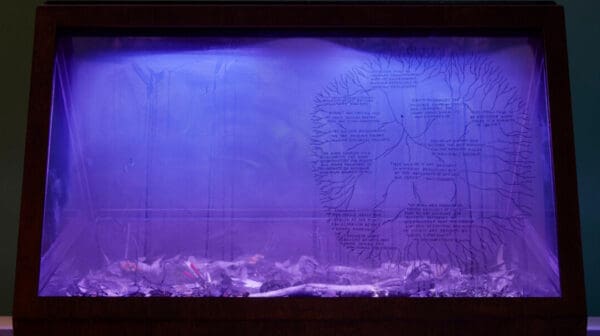
Life Sustaining
All that is Alive is a multi-disciplinary exhibition exploring living systems with a focus on regeneration and growth, on display at UTS Gallery in Sydney.
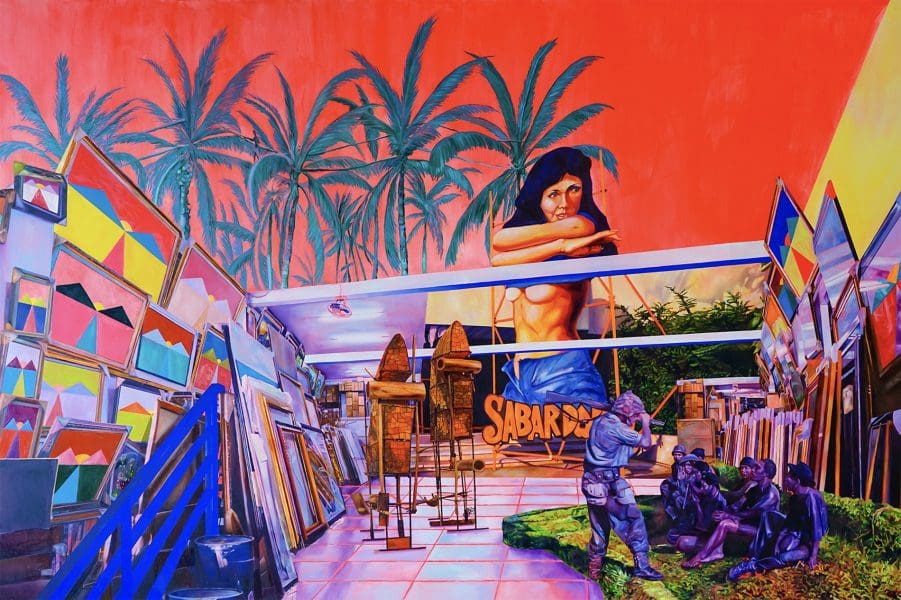
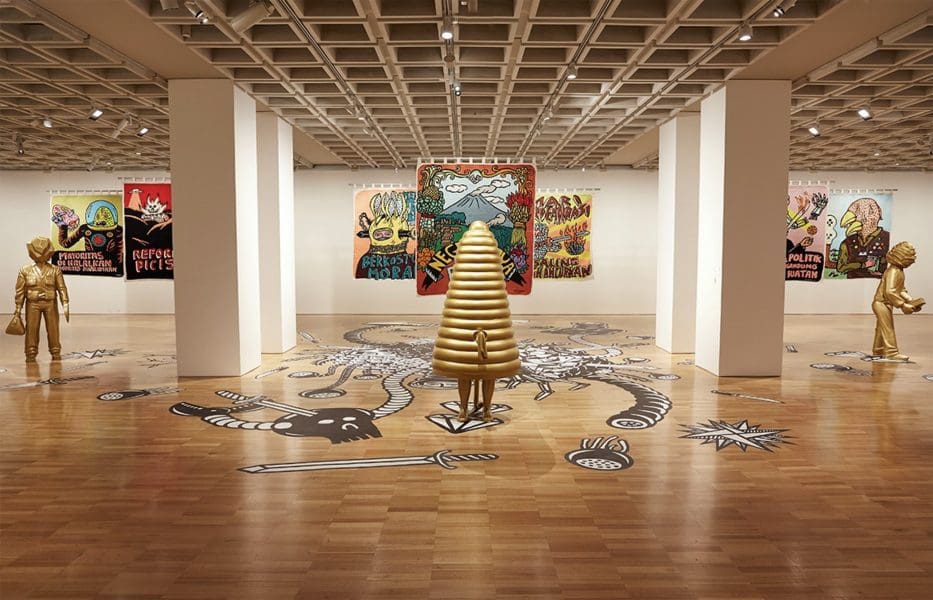
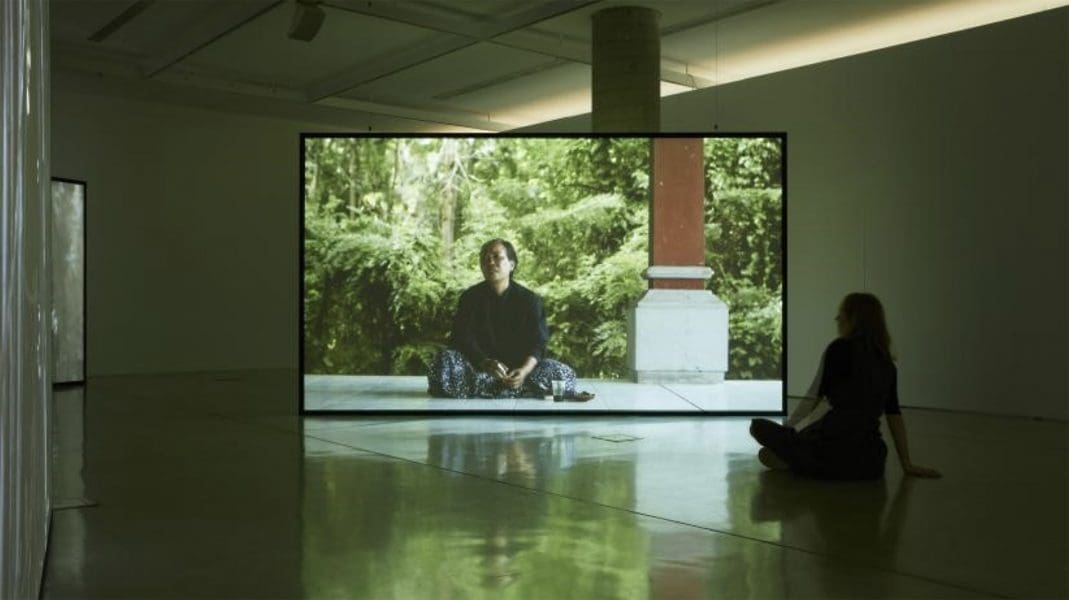
Gangguan Tenggara – Edisi Indonesia is the fourth and final in Bega Valley Regional Gallery’s South/East Interference exhibition series. In this iteration the focus is on Indonesia and “how we relate to one of our closest neighbours,” says curator and gallery director Iain Dawson. In the context of an exhibition series about the south east – from Bega’s place in south east New South Wales to Australia’s place in the region – much of the work in Gangguan Tenggara highlights issues of perspective, community, centres and margins.
Gangguan Tenggara features Leyla Stevens, Zico Albaiquni and Eko Nugroho, three artists who are making work about “moving forward in Indonesian history but also acknowledging what has happened there – the ghosts that still linger,” Dawson says.
Stevens is an Australian-Balinese artist and researcher. Her three-channel video work, Kidung/Lament, 2019, responds to the mass killings of communists in Indonesia in 1965. It shows a woman chanting a lament towards a banyan tree, the site of an unmarked mass grave and a silent witness to history. Her practice is rooted in interview and collaboration. Stevens blends elements of documentary and performance and she favours long shots with minimal directorial intervention.
Dawson has included three recent paintings by Albaiquni, a Bandung-based artist known for his rich, saturated palette and perspective-shifting compositions. Mooi Enchantment after Sekarmadji, 2019, draws on the lush fantasy of Mooi painting traditions and reworks them into a scene of luxury, perhaps a gallery or high-end boutique. There is sparkling glass and a vaulted ceiling that suddenly gives way to reveal an exotic pink sky. “You want to fall in love with the surroundings and the brightness and the perceived happiness,” says Dawson. “But then you are drawn to the realism.”
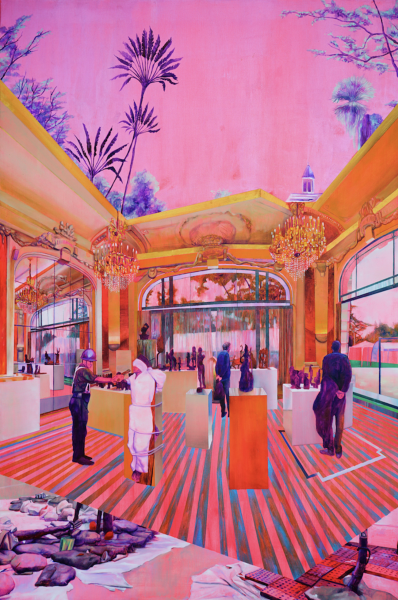
In the foreground of the work, just off centre, a blindfolded man is tied to a plinth. A uniformed figure stands over him while customers stroll around, their hands tucked neatly behind their backs. Sekarmadji led the Darul Islam rebellion against the Indonesian government and was executed in 1962, and this reference is part of a broader investigation into state-sanctioned violence, commodification, cognitive dissonance and illusion.
Gangguan Tenggara also presents Eko Nugroho’s major installation Lot Lost, 2013-2015. It’s a swirling mix of humour, colour and commentary about life in Yogyakarta. Satirical banners blend the language of politics and capitalism, and vinyl floor stickers twist around golden statues that appear to be half-worker, half-mythical creature. One is just a pair of legs rammed into a beehive, like some kind of sightless, scurrying worker bee.
Masks are a recurring theme in the work, from those worn by the statues to aliens in space helmets. “Even though it has that fun, pop, manga sensibility, his work is talking about the Indonesian way of wearing different masks,” says Dawson, “and the different layers of Indonesia after the 1960s massacres.”
The exhibition title Gangguan Tenggara roughly translates as South East Disturbance. The focus is on political agitation and its ongoing consequences, but the exhibition also seeks to disrupt the way Indonesia is seen by Australians as a playground and holiday destination. For Dawson, it also makes a point about what regional galleries can do. As he says, “There’s a definite feeling that we are reaching out as well as bringing things in.”
Gangguan Tenggara – Edisi Indonesia
Bega Valley Regional Gallery
21 September – 7 November